Papers by Marcello Picollo

DOAJ (DOAJ: Directory of Open Access Journals), May 12, 2016
ArcheomaticA N°1 marzo 2016 impegno del Consiglio Nazionale delle Ricerche nell'ambito dello stud... more ArcheomaticA N°1 marzo 2016 impegno del Consiglio Nazionale delle Ricerche nell'ambito dello studio, salvaguardia e valorizzazione del patrimonio culturale nasce circa cinquant'anni fa, nel contesto della straordinaria reazione della società della conoscenza di fronte ai danni dell'alluvione di Firenze. Un tale coinvolgimento delle scienze naturali e tecnologiche è cresciuto nei decenni successivi, fino all'importante traguardo delle circa 350 unità operative del Progetto Finalizzato "Beni Culturali" (1997-2001), ideato da Angelo Guarino (presidente del Progetto) e diretto da Umberto Baldini, protagonista dell'emergenza fiorentina e del dialogo multidisciplinare. Fino da allora, IFAC ha fornito un contributo importante alla centralità di Firenze nella conservazione, attraverso i risultati di numerosi progetti di ricerca e sviluppo di nuove tecnologie per la caratterizzazione materica, il restauro, la musealizzazione e il monitoraggio di beni culturali, che hanno coinvolto istituzioni di tutela (Opificio delle Pietre Dure, Soprintendenze, Musei, Opere e altri), imprese di prodotti high-tech (El.En. S.p.A. e altre) e molte ditte di restauro. Al tempo stesso, il prolungato impegno in campagne archeometriche e conservative, gli hanno consentito di maturare competenze su una molteplicità di tematiche materiche riguardanti opere lapidee, manufatti metallici e dipinti.
Proc. 4th Int. Workshop Advanced Infrared Technology and Applications, 1998
Color Research & Application, 2020

2018 First International Workshop on Mobile Terahertz Systems (IWMTS), 2018
The electromagnetic radiation, in the range from IR to X-rays, is widely used in the field of art... more The electromagnetic radiation, in the range from IR to X-rays, is widely used in the field of art conservation and diagnostics. In the last few years a new interest was devoted to the longer wavelengths, in the so called “THz region” of the spectrum, due to the peculiar characteristics of the radiation in this spectral range, that make it ideal for applications in this field [1]: it's low photon energy and its ability to penetrate dielectric materials. This high penetration capabilities were used to demonstrate the possibility to detect artwork hidden under layers of other dielectric materials [2]–[4]. Making use of phase-sensitive techniques it is also possible to get information on the optical properties of the materials under study and to obtain images that include spectroscopic information about the sample [5]. Moreover, radiation in the THz range is strongly reflected and absorbed by water, and this feature can be used to study degradation in mural paintings and mosaics.
2017 42nd International Conference on Infrared, Millimeter, and Terahertz Waves (IRMMW-THz), 2017
THz radiation is strongly absorbed, as well as reflected, by water. This spectral feature can be ... more THz radiation is strongly absorbed, as well as reflected, by water. This spectral feature can be exploited to detect the presence of water under the surface of mural paintings and mosaics. In this study we report on the capability of our 3D reflective THz imaging system to detect water under samples simulating a fresco or a mosaic.
Bollettino Della Societa Geologica Italiana, 1990

Archaeological and Anthropological Sciences, 2017
In the complex and multiform panorama of the Asian heritage, Tibetan Buddhist sacred texts are ta... more In the complex and multiform panorama of the Asian heritage, Tibetan Buddhist sacred texts are tangible evidence of an ancient religious tradition. The historical value and fragility of these unique and priceless works of art, together with an increased awareness of the importance of preserving our cultural heritage, has prompted the use of non-invasive analytical techniques to the study of these ancient religious items. In particular, the present work aims to characterize inks and pigments of two ancient Tibetan manuscripts part of the collection of the Museum of Natural History, Department of Anthropology, in Florence (IT). A combination of portable microphotography, X-ray fluorescence (XRF), and UV-Vis-NIR fiber optic reflectance spectroscopy (FORS) was used for in situ investigation of all the most significant painted area appearing in the manuscripts. Information about the preparatory substrate, the pigments, and the metal inks were gained. A step forward a better understanding of the working methods applied by the artists was made, thus contributing significantly towards the planning of the most appropriate conservation-restoration procedures.
2016 41st International Conference on Infrared, Millimeter, and Terahertz waves (IRMMW-THz), 2016
One of the main objectives of the THz-ARTE project is the construction of a portable THz imaging ... more One of the main objectives of the THz-ARTE project is the construction of a portable THz imaging scanner, specifically designed to investigate mural paintings. Making of such a device and its use on an artwork will be presented.
Studies in Conservation, 2000
2014 44th European Microwave Conference, 2014
The Terahertz imaging technique was applied to observe the preparation layer of wall paintings. T... more The Terahertz imaging technique was applied to observe the preparation layer of wall paintings. The experimental results revealed the effect of the particle size of fillers and the possibility of internal interface observation by the THz pulse-echo imaging.
Ever since its first introduction in the field of conservation, the role of UV-VIS luminescence/f... more Ever since its first introduction in the field of conservation, the role of UV-VIS luminescence/fluorescence (UVL and UVf, respectively) imaging has been expanding.The unique and significant contribution of this technique for investigation of cultural heritage has led to the development of new methodologies and applications. Each chapter in this volume can be read independently. While this means that some repetition may occur between the individual chapters, in particular regarding the explanation of terminology and methodology, such overlap provides interesting opportunities for cross-comparison of both terminology and methodology. In addition, it highlights similarities and differences between different situations in the practical application
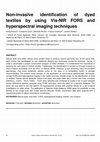
Natural dyes have been utilized since ancient times to produce colorful garments and, at the same... more Natural dyes have been utilized since ancient times to produce colorful garments and, at the same time, each culture has developped its own traditional designs and techniques during the centuries. Hence, in order to accomplish a proper conservation program of these artefacts, it is fundamental the importance of studying the used dyes on historic textiles. Traditionally, the identification is carried out through invasive or micro-invasive techniques such as HPLC or Raman-SERS. However, a first screening using non-invasive approaches, that could tentatively identify some of the dyes in a contactless mode, is strongly reccommended. The present study focuses on the application of non-invasive spectroscopic techniques, namely FORS and hyperspectral imaging in the visible and near infrared range, for the identification of dyes on textiles. Twelve natural dyestuffs (twelve from plant, two insect dyes and a lichen) and three mordants (KAl(SO 4) 2 , CuSO 4 • 5H 2 O, FeSO 4 • 7H 2 O) were selected and combined to create a set of wool samples whose reflectance spectra, acquired using FORS technique, were the basis for a spectral database. The same set was used to test the Specim IQ hyperspectral camera, with positive results for a non-invasive investigation on wider areas. The application of Spectral Angle Mapping (SAM) gave the possibility to map directly on the image pixel with similar spectral features. Finally, colorimetric data were acquired with a spectrocolorimeter to obtain chromaticity coordinates. KEYWORDS Natural dyes, wool fiber, FORS, hyperspectral imaging, textiles, non-invasive
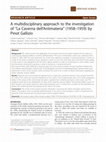
Heritage Science, Dec 1, 2014
Background: This study concerns the application of non-invasive and micro-invasive analyses for t... more Background: This study concerns the application of non-invasive and micro-invasive analyses for the study of a contemporary artwork entitled La Caverna dell'Antimateria ("The Cave of Antimatter") which was created by Pinot Gallizio in 1958-1959. The work represents one of the most significant examples of industrial painting. It consists of a total of 145 meters of painted canvas, designed in order to cover the entire floor plan of the René Drouin gallery in Paris, where it was displayed for the first time. Gallizio wanted to create an environment in which visitors could find themselves immersed in painting, in what he termed as a "work-environment". Non-invasive (Fibre Optic Reflectance Spectroscopy) and micro-invasive analyses (Fourier Transform Infrared and micro-Raman Spectroscopies, Pyrolysis-Gas Chromatography and Gas Chromatography/Mass Spectrometry) were performed on three of the canvases which constitute this work of art in order to obtain information regarding the artistic materials used by Gallizio. Results: Pigments and unconventional materials (such as metal wires, sand) are present in the canvases that form the ceiling. The colours are unevenly distributed on the surface, thus revealing large areas of the white preparation below. In the canvas of the wall, instead, the paint is applied more uniformly and gives a dark colour cast. The analytical results led to the identification of many of the materials used by Gallizio. The pictorial palette consists of both inorganic and organic pigments, while polyvinylacetate, pure or mixed with a siccative oil, was identified as a binder thus confirming what was reported by the artist in his notes. Conclusions: The results of this research provide information concerning the artistic technique used by Pinot Gallizio. The analyses were successfully performed both in situ and on micro-samples in order to characterise the pigments of the coloured area, the ground layer and the organic binders.


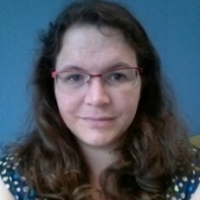

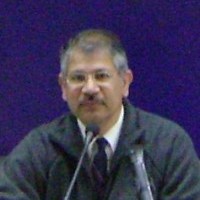
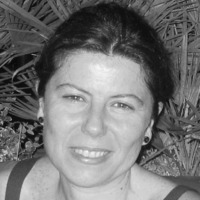





Uploads
Papers by Marcello Picollo